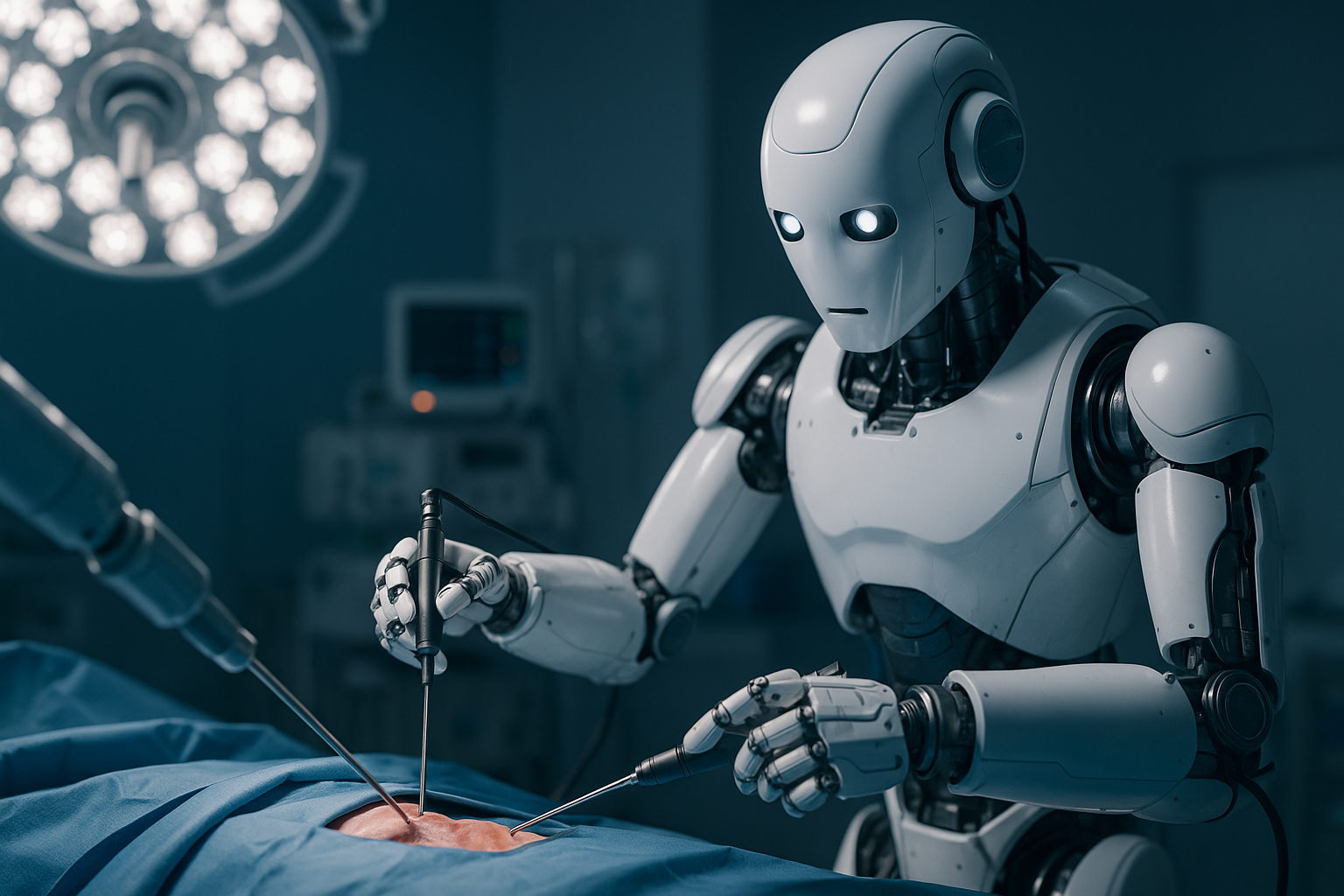This AI Robot Just Performed Surgery on Its Own (And It Was Flawless)
A surgical robot just did something no machine has done before and it might change the future of medicine forever.

You must be thinking this sounds like something out of a sci-fi movie, but it happened last week (on July 9, 2025). Researchers at Johns Hopkins built a robot that learned surgery by watching videos (you can learn anything from youtube amirite?), then performed a complete gallbladder removal without any human help.
AND it got it right every single time.
What You Need to Know

The robot, called SRT-H, completed eight gallbladder surgeries with 100% accuracy. But what makes this impressive isn't just the success rate, it's how the robot handled unexpected problems.
When researchers messed with the procedure mid-surgery on purpose (adding paint to change what the robot could see, or moving organs around), the robot adapted in real-time. It also followed voice commands like "grab the gallbladder head" just like a human assistant would.
Think about that for a second. This isn't a pre-programmed machine following a script. It's making decisions and adjusting its approach as it goes.
How Does a Robot Learn Surgery?
Here's where it gets interesting. The researchers didn't program every possible surgical scenario. Instead, they showed the robot hours of surgery videos. They kinda just let it watch Johns Hopkins surgeons do the procedure over and over.
The robot uses AI similar to ChatGPT, but instead of generating text, it generates surgical plans.
It works on two levels:
- First, it figures out what needs to happen next (like "identify the artery")
- Then it translates that into precise robotic movements
It's learning sort of the same way human surgical residents do, just much faster.
This Isn't Happening in Isolation
While you were focused on other AI developments, surgical robotics has been quietly exploding:
- Vanderbilt just got $12 million to build robots that can remove tumors by themselves
- Sony demonstrated a robot that can stitch a corn kernel (video above)
- Stanford and Johns Hopkins are teaching da Vinci robots to tie surgical knots
- The market for autonomous surgical robots jumped 13.4% in just one year
Before You Panic About Robot Surgeons
Let's be clear about what actually happened here. The robot operated on pig cadavers and synthetic models in a controlled lab, not living patients. Real surgery involves bleeding, patient movement, and countless unpredictable variables that weren't present in these tests.
Human trials are still years away. Experts think supervised testing might begin within a decade, but only after extensive validation on living animal models.
Why This Matters to You
You might be wondering if this means robots will replace surgeons. The answer is a bit more nuanced than that.
What we're looking at is the potential for:
- More precise surgery with fewer human errors
- Access to expert-level procedures in areas without specialized surgeons
- 24/7 availability without surgeon fatigue
- Lower costs as the technology scales
But we're also facing questions about liability (who's responsible if the robot makes a mistake?), the need for human oversight, and how to ensure these systems are safe in real-world conditions.
What Happens Next
The research was published in Science Robotics last week, and other teams are already building on this work. The global market for autonomous surgical robots is growing fast, driven by both technological advances and practical needs (there's a projected shortage of 10,000-20,000 surgeons in the U.S. by 2036).
But don't expect to see autonomous robot surgeons in your local hospital anytime soon. The path from laboratory success to clinical practice involves years of additional testing, regulatory approval, and safety validation.
This is a proof-of-concept that fully autonomous surgery is no longer science fiction - it's now an engineering problem we're actively solving!
The question is how quickly we can make it safe, reliable, and accessible enough to improve medical care for everyone who needs it.
Cheers, Zvonimir